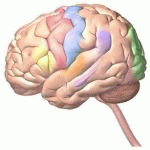Neurology
|
14 january 2019 16:02:12 |
| Brain Microdialysate Monoamines in Relation to Circadian Rhythms, Sleep, and Sleep Deprivation - a Systematic Review, Network Meta-analysis, and New Primary Data (Journal of Circadian Rhythms) |
|
Tweet Disruption of the monoaminergic system, e.g. by sleep deprivation (SD), seems to promote certain diseases. Assessment of monoamine levels over the circadian cycle, during different sleep stages and during SD is instrumental to understand the molecular dynamics during and after SD. To provide a complete overview of all available evidence, we performed a systematic review. A comprehensive search was performed for microdialysis and certain monoamines (dopamine, serotonin, noradrenaline, adrenaline), certain monoamine metabolites (3,4-dihydroxyphenylacetic acid (DOPAC), 5-hydroxyindoleacetic acid (5-HIAA)) and a precursor (5-hydroxytryptophan (5-HTP)) in PubMed and EMBASE. After screening of the search results by two independent reviewers, 94 publications were included. All results were tabulated and described qualitatively. Network-meta analyses (NMAs) were performed to compare noradrenaline and serotonin concentrations between sleep stages. We further present experimental monoamine data from the medial prefrontal cortical (mPFC). Monoamine levels varied with brain region and circadian cycle. During sleep, monoamine levels generally decreased compared to wake. These qualitative observations were supported by the NMAs: noradrenaline and serotonin levels decreased from wakefulness to slow wave sleep and decreased further during Rapid Eye Movement sleep. In contrast, monoamine levels generally increased during SD, and sometimes remained high even during subsequent recovery. Decreases during or after SD were only reported for serotonin. In our experiment, SD did not affect any of the mPFC monoamine levels. Concluding, monoamine levels vary over the light-dark cycle and between sleep stages. SD modifies the patterns, with effects sometimes lasting beyond the SD period. Published on 2019-01-14 09:46:38 |
| 112 viewsCategory: Neurology |
 Layer-Specific Physiological Features and Interlaminar Interactions in the Primary Visual Cortex of the Mouse (Neuron) Layer-Specific Physiological Features and Interlaminar Interactions in the Primary Visual Cortex of the Mouse (Neuron)ALS-implicated protein TDP-43 sustains levels of STMN2, a mediator of motor neuron growth and repair (Nature Neuroscience) 
|
| blog comments powered by Disqus |
MyJournals.org
The latest issues of all your favorite science journals on one page
The latest issues of all your favorite science journals on one page



